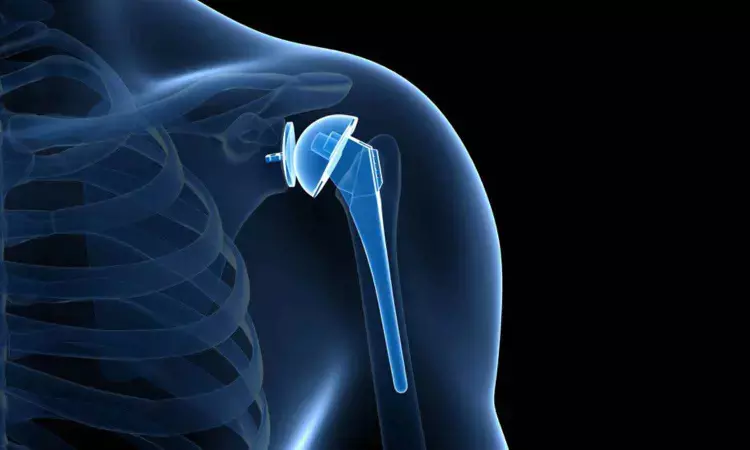- Home
- Medical news & Guidelines
- Anesthesiology
- Cardiology and CTVS
- Critical Care
- Dentistry
- Dermatology
- Diabetes and Endocrinology
- ENT
- Gastroenterology
- Medicine
- Nephrology
- Neurology
- Obstretics-Gynaecology
- Oncology
- Ophthalmology
- Orthopaedics
- Pediatrics-Neonatology
- Psychiatry
- Pulmonology
- Radiology
- Surgery
- Urology
- Laboratory Medicine
- Diet
- Nursing
- Paramedical
- Physiotherapy
- Health news
- Fact Check
- Bone Health Fact Check
- Brain Health Fact Check
- Cancer Related Fact Check
- Child Care Fact Check
- Dental and oral health fact check
- Diabetes and metabolic health fact check
- Diet and Nutrition Fact Check
- Eye and ENT Care Fact Check
- Fitness fact check
- Gut health fact check
- Heart health fact check
- Kidney health fact check
- Medical education fact check
- Men's health fact check
- Respiratory fact check
- Skin and hair care fact check
- Vaccine and Immunization fact check
- Women's health fact check
- AYUSH
- State News
- Andaman and Nicobar Islands
- Andhra Pradesh
- Arunachal Pradesh
- Assam
- Bihar
- Chandigarh
- Chattisgarh
- Dadra and Nagar Haveli
- Daman and Diu
- Delhi
- Goa
- Gujarat
- Haryana
- Himachal Pradesh
- Jammu & Kashmir
- Jharkhand
- Karnataka
- Kerala
- Ladakh
- Lakshadweep
- Madhya Pradesh
- Maharashtra
- Manipur
- Meghalaya
- Mizoram
- Nagaland
- Odisha
- Puducherry
- Punjab
- Rajasthan
- Sikkim
- Tamil Nadu
- Telangana
- Tripura
- Uttar Pradesh
- Uttrakhand
- West Bengal
- Medical Education
- Industry
Shoulder hemiarthroplasty surgery within 2 weeks after sustaining proximal humerus fracture valid: study

The proximal humeral fracture (PHF) is the third most common osteoporosis-related fracture in the population between 65 and 89 years and the prevalence is 4–6%.Preoperative delay may affect the outcome of proximal humerus fractures treated with shoulder hemiarthroplasty. There is currently no consensus for the recommended preoperative time interval.
Yilmaz Demir et al conducted a study to examine how the time to surgery with shoulder hemiarthroplasty after a proximal humerus fracture affected the patient-reported outcome.
380 patients with proximal humerus fractures treated with shoulder hemiarthroplasty recorded from the Swedish Shoulder Arthroplasty Registry were included. Three self-reporting outcome instruments were used at follow-up after 1–5 years: a shoulder-specific score, the Western Ontario Osteoarthritis of the Shoulder index (WOOS), the EuroQol-5 Dimension index (EQ-5D), and subjective patient satisfaction assessment.
Key findings of the study were:
• The study group consisted of 81% women with a range in age of 42–90 years (males age ranged 34–91 years). The majority (82%) had under gone surgery within 14 days after the trauma.
• The preoperative delay had a negative impact on the WOOS, EQ-5D, and patient satisfaction level (p< 0.01).
• The best result, measured with WOOS at a minimum 1-year follow-up, was found when surgery was performed 6–10 days after the reported date of fracture.
• WOOS% 8–14 days was 69.4% (±24.2). A delay of more than 10 days was shown to be correlated with poorer outcomes.
• WOOS% 15–60 days was 55.8% (±25.0) and continued to decrease.
• A delay of 15–60 days after fracture demonstrated poorer outcomes in all three scores. Surgery during weekdays had better scores compared to surgery on weekends.
The authors concluded that - “The current recommendation not to delay a hemiarthroplasty more than 14 days after a proximal humeral fracture is supported by our findings. A few days of delay from the trauma does not seem to impair the result, as assessed by PROM. It is not necessary to perform the surgery immediately or outside of office hours.
The study exclusively relies on data from the Swedish population. Future studies could enhance the robustness of the findings by analyzing data from diverse countries.”
Further reading:
Timing of Surgery for Proximal Humeral Fracture Treated with Shoulder Hemiarthroplasty, Best Results with Surgery Within 2 Weeks Yilmaz Demir et al Indian Journal of Orthopaedics (2024) 58:162–168 https://doi.org/10.1007/s43465-023-01079-y
MBBS, Dip. Ortho, DNB ortho, MNAMS
Dr Supreeth D R (MBBS, Dip. Ortho, DNB ortho, MNAMS) is a practicing orthopedician with interest in medical research and publishing articles. He completed MBBS from mysore medical college, dip ortho from Trivandrum medical college and sec. DNB from Manipal Hospital, Bengaluru. He has expirence of 7years in the field of orthopedics. He has presented scientific papers & posters in various state, national and international conferences. His interest in writing articles lead the way to join medical dialogues. He can be contacted at editorial@medicaldialogues.in.


